RECOMMENDED VIDEOS

Biogas to Energy
Organics Asia Co., Ltd

Energy Efficiency for your business
E.ON UK

Sol Present - The Solution to Climate Change
Sol Present

ECO-EZY : Zone & Dimming Control System
Eco-ezy Sdn Bhd

eze - Sea Wave Power Generation
EZE-ENERGY CO., LTD
Related Stories
The largest solar farm apiary in the US opens this week
The City of London will be powered with 100% renewable energy by October 2018
New study suggests that plastic waste may be transformed into usable energy
Uravu’s zero-electricity Aqua Panels produce gallons of water from thin air
104% of Portugal’s electricity consumption in March came from renewable energy
17 Jul, 2017
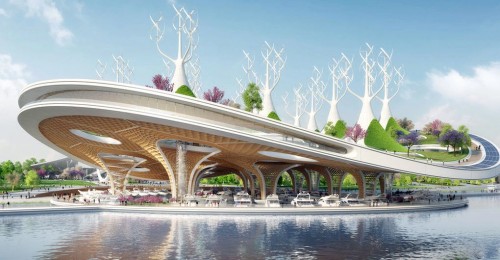
This gigantic floating Manta Ray could naturally purify Seoul’s river
Renewable Energy & Energy Efficiency | KOREA, REPUBLIC OF | 13 Jun, 2017
Published by : Eco Media Asia
What if our city infrastructure could also repair the damage we’ve done to nature? Vincent Callebaut’sManta Ray is an experimental landscape design that aims to sustainably restore the natural environment in Seoul. Developed for an international competition, Manta Ray is a floating ferry terminal proposal that uses marshland plants to naturally purify the Han River and produces 100% of its energy needs through renewable sources.
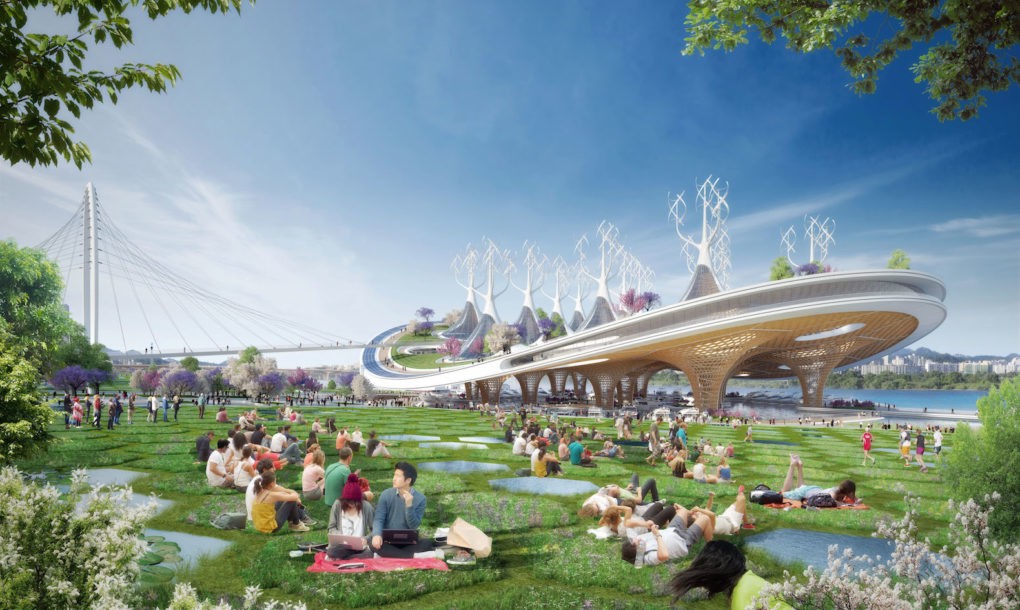
The Manta Ray is the latest design in Vincent Callebaut Architectures’ extensive portfolio of green utopian designs. His striking proposal for Seoul takes a multilayered approach to the landscape, beginning with the transformation of the existing Yeouido Park on the banks of the Han River into a “genuine cultural hub” reinforced with resilient design principals. A forest of willow trees is proposed for the park, as are marsh-like filtering strips to protect the banks against flooding. Pedestrian paths, large terraces, bicycle lanes, and an amphitheater would be added along the river.
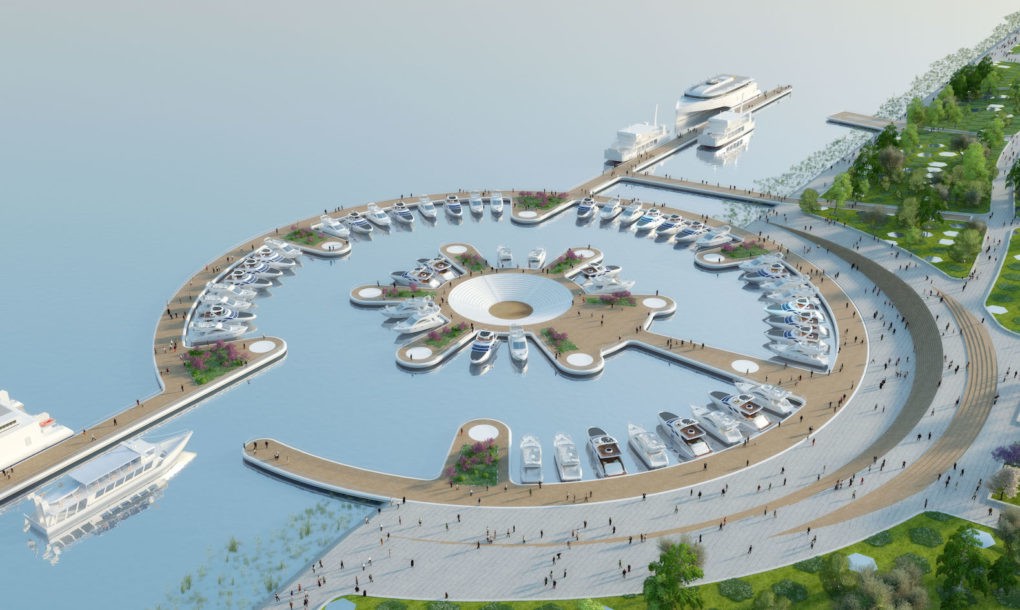
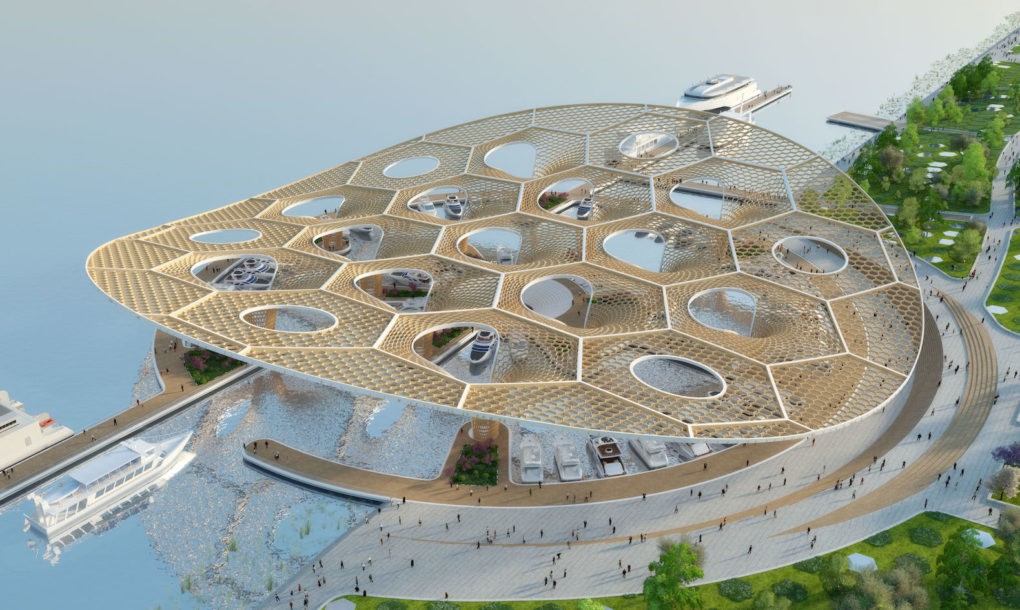
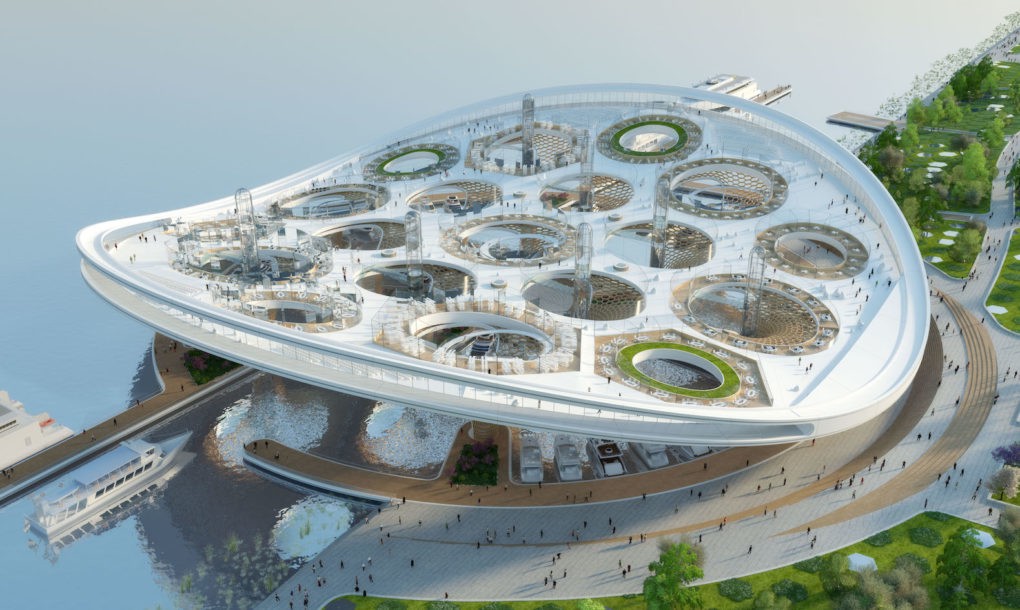
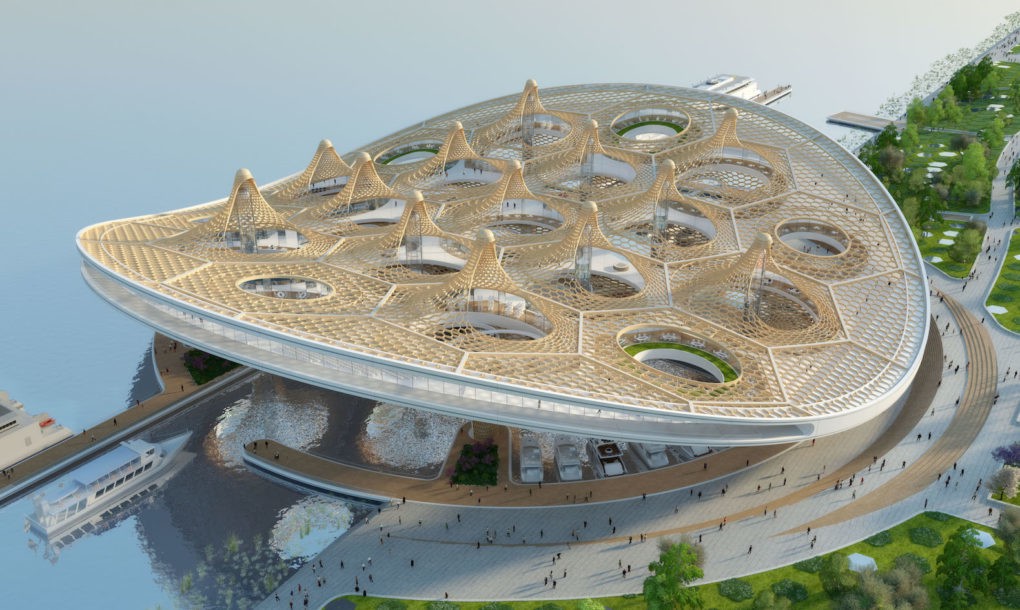
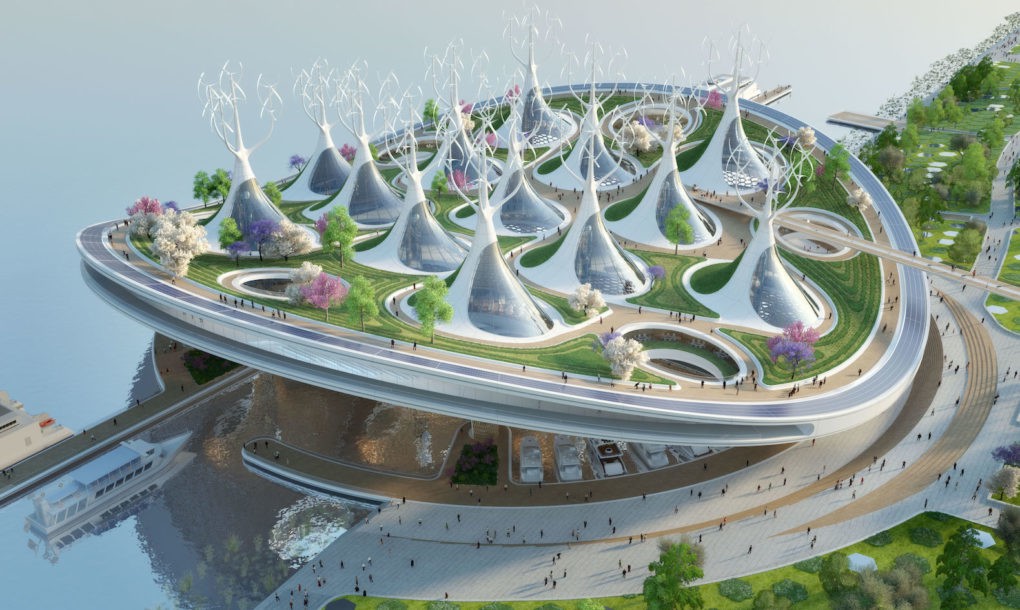
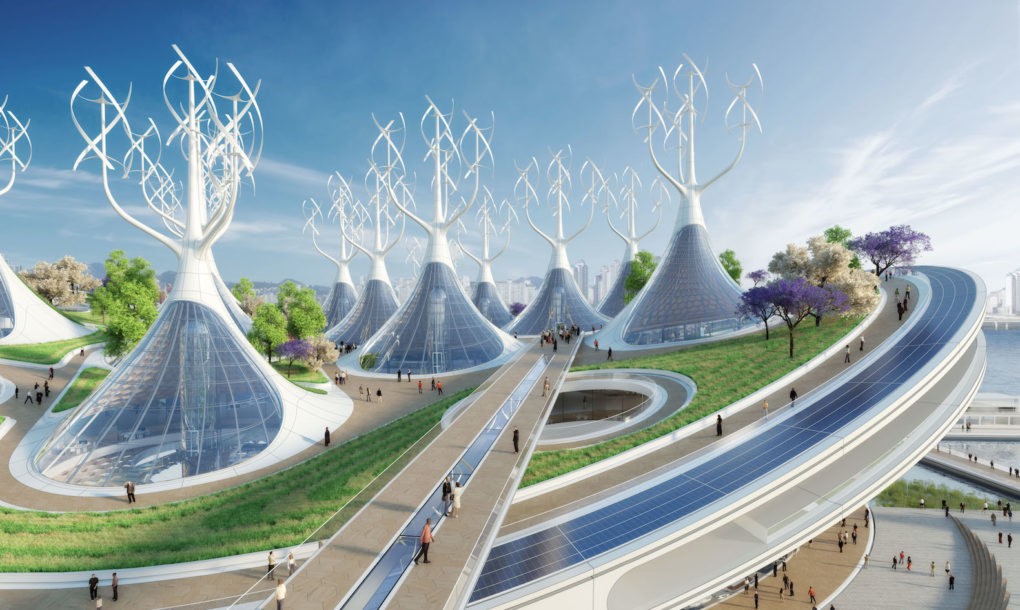
The Yeoui-Naru floating three-level ferry terminal juts out of the park and would be suspended above a marina and gardens. On the lower docks is a marina comprising linked steel dikes integrated with equipment to charge boats with water, electricity, and biofuels. Atop the marina is a flared, manta ray-shaped structure that houses the reception, leisure areas, food courts, exhibition space, and educational spaces. Tree-shaped structures made from cross-laminated timber sourced from “eco-responsible Korean forests” crown the building. The top-most level also includes an observation deck with views towards Ban island, as well as a rooftop orchard.
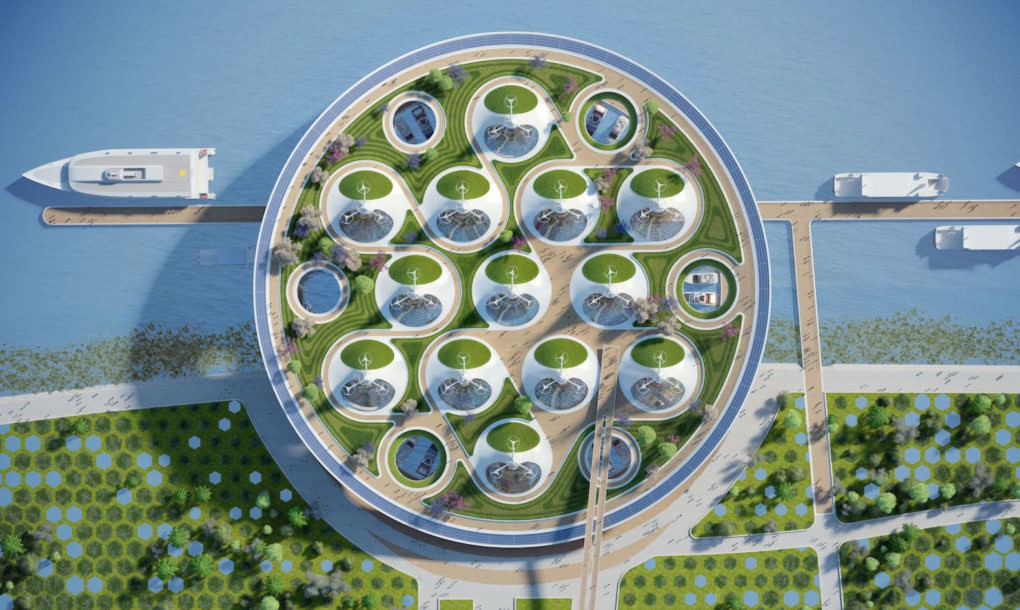
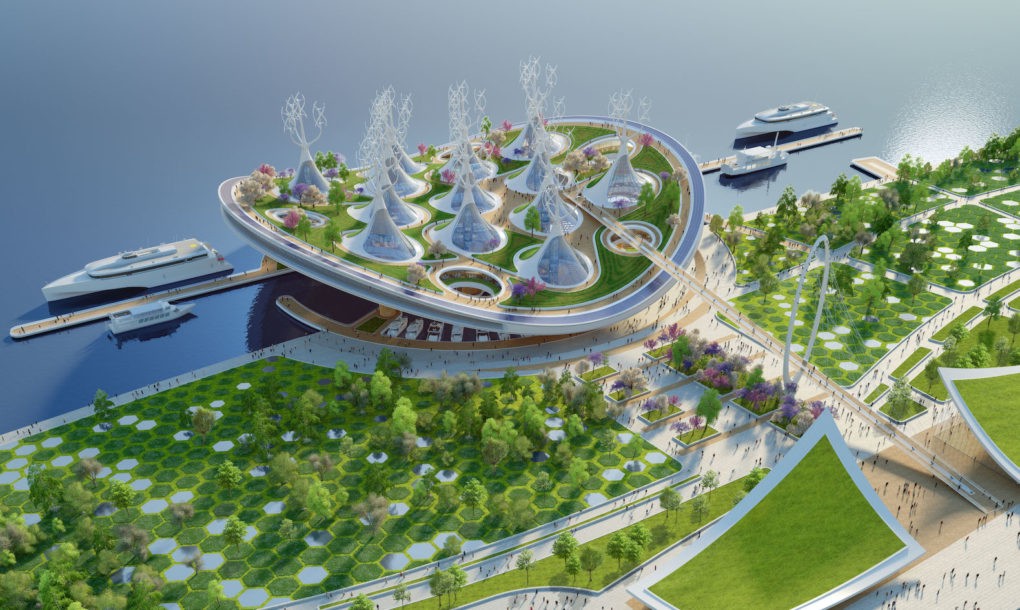
The Manta Ray would produce all of its energy needs from a mix of renewable energy sources. The first includes solar energy harvested from 49,000 square feet of rooftop solar cells installed on the laminated glass facade, as well as 37,300 square feet of opaque photothermal panels. The 52 CLT trees are topped with wind turbines. Organic and biodegradable waste from Yeouido Park would be collected for use at a biomethanation plant to provide energy for Manta Ray, while oscillating-foils hydrokinetic turbines (HAO) would be integrated along the hull of the large floating barrier encircling the marina.
“Seoul is finding new ways to invest in this kind of soft infrastructure, helping to foster social cohesion with a greater sense of community among diverse socio-economic groups,” writes Vincent Callebaut Architectures. “With an eye toward increasing equitable access for everyone to these new facilities, this floating vessel is an example of biophilic and resilient architecture, demonstrating that it is possible to build with nature rather than against it, by respecting the life of the river and allowing the local fauna and flora to flourish. The “Manta Ray” project promotes the permeability and renaturalization of river banks in cities with rivers running through them. The banks become new playgrounds for social innovation, and for urban “consumers-actors” seeking to promote urban farming, agroforestry and permaculture. The goal is to make them less vulnerable to climate change, and to the subsequent dramatic flood and urban heat island events witnessed over the past decades.”
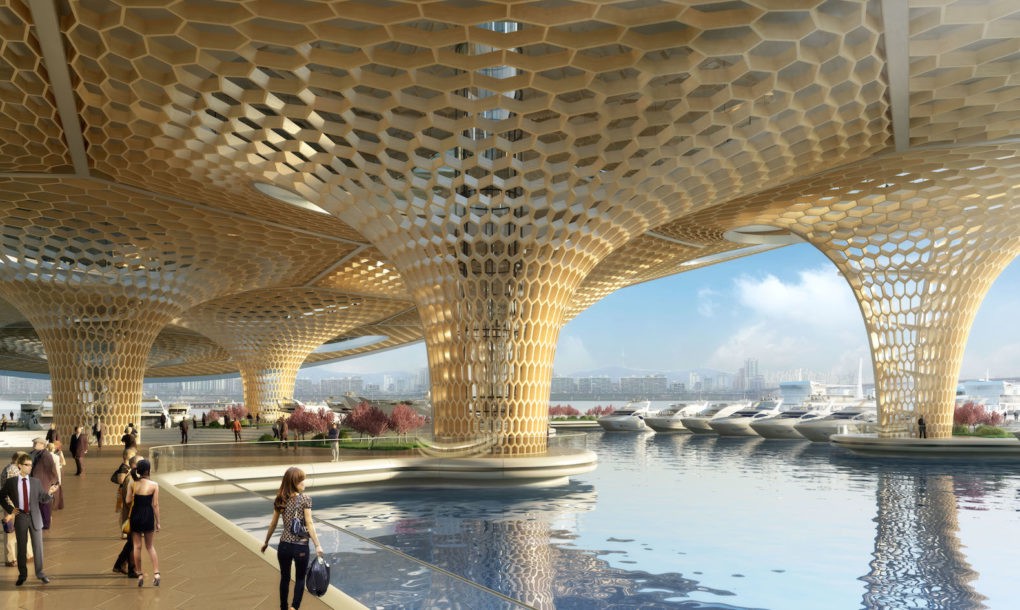
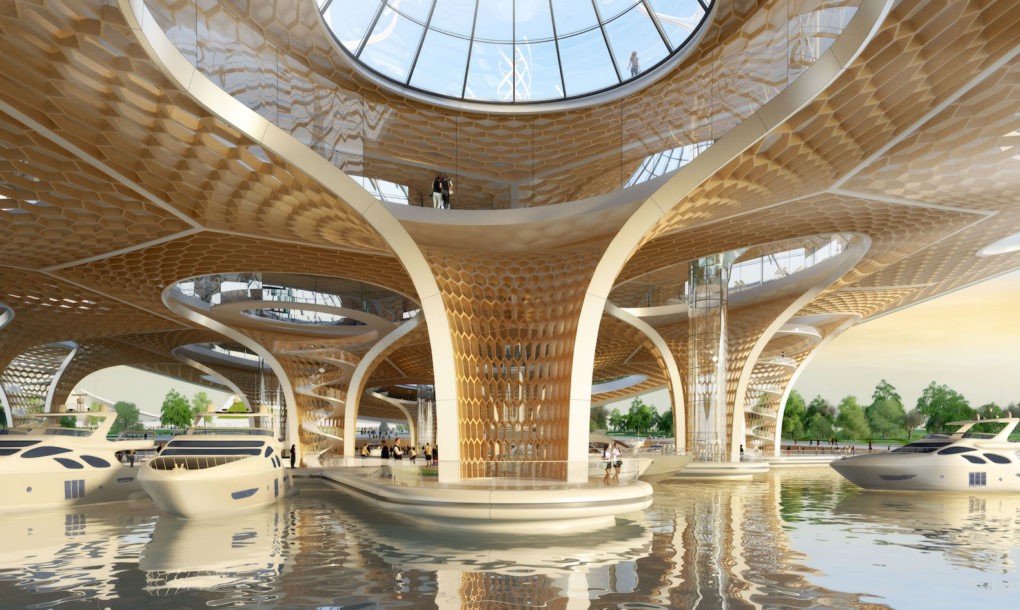
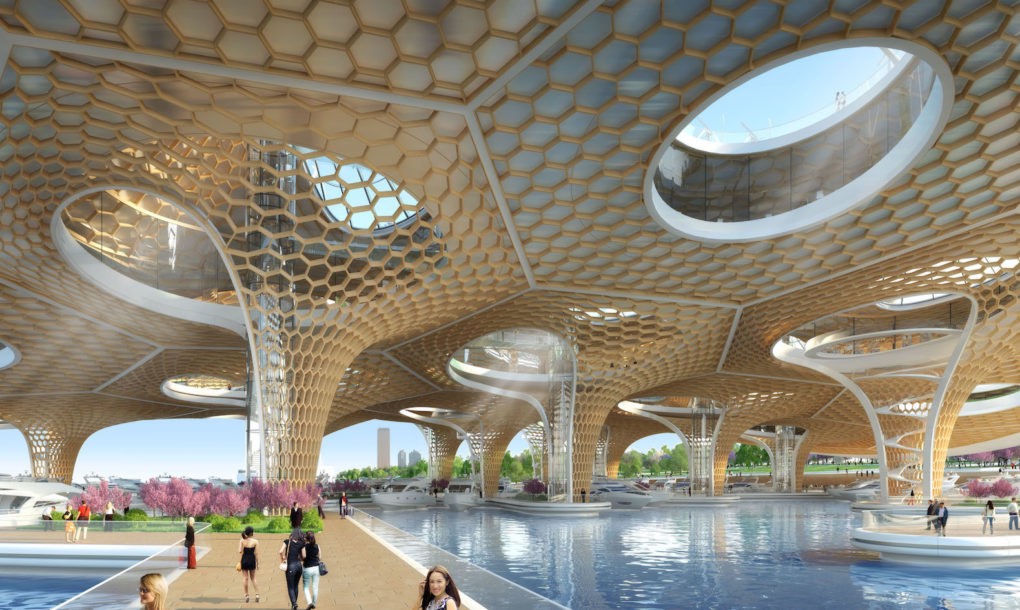
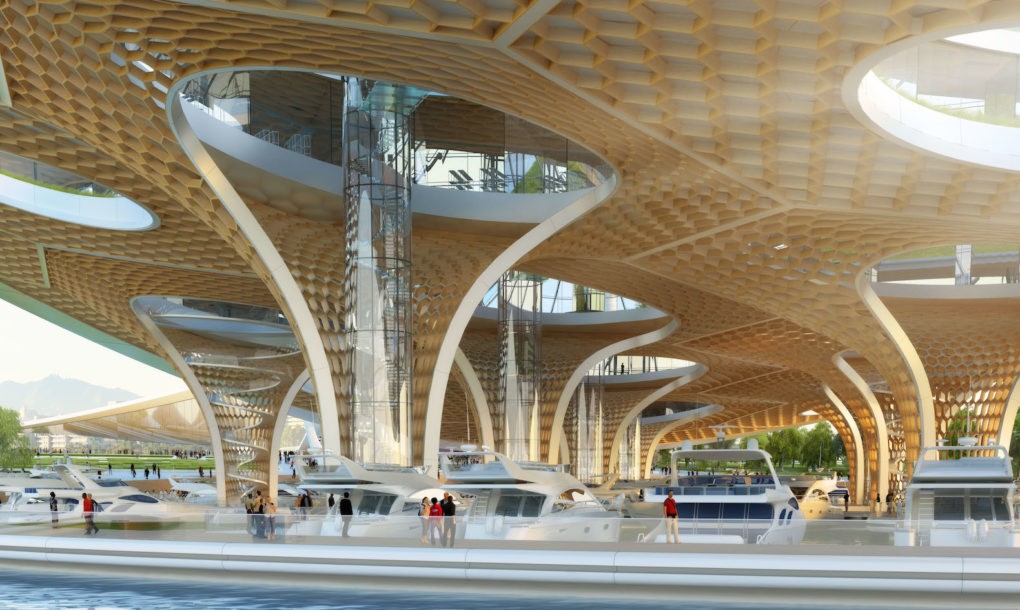
Article from inhabitat.com
by Lucy Wang
